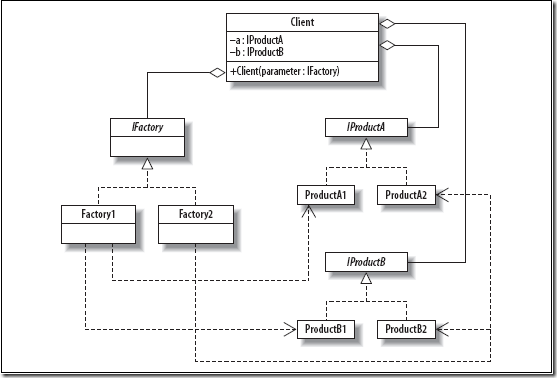提供一个创建一系列相关或相互依赖对象的接口,而无需指定它们具体的类
对于不同类产品提供一类工厂
1.产品接口
interface IBag { string Material { get; } } // Product 2 interface IShoes { int Price { get; } }
2.工厂
这里采用了泛型,所以会更灵活些
interface IFactory<Brand> where Brand : IBrand { IBag CreateBag(); IShoes CreateShoes(); } // Conctete Factories (both in the same one) class Factory<Brand> : IFactory<Brand> where Brand : IBrand, new() { public IBag CreateBag() { return new Bag<Brand>(); } public IShoes CreateShoes() { return new Shoes<Brand>(); } }
3.IBrand
不同类产品信息
interface IBrand { int Price { get; } string Material { get; } } class Gucci : IBrand { public int Price { get { return 1000; } } public string Material { get { return "Crocodile skin"; } } } class Poochy : IBrand { public int Price { get { return new Gucci().Price / 3; } } public string Material { get { return "Plastic"; } } } class Groundcover : IBrand { public int Price { get { return 2000; } } public string Material { get { return "South african leather"; } } }
4.对不同类产品创建不同工厂
class Client<Brand> where Brand : IBrand, new() { public void ClientMain() { //IFactory<Brand> factory) IFactory<Brand> factory = new Factory<Brand>(); IBag bag = factory.CreateBag(); IShoes shoes = factory.CreateShoes(); Console.WriteLine("I bought a Bag which is made from " + bag.Material); Console.WriteLine("I bought some shoes which cost " + shoes.Price); Console.ReadKey(); } } static class Program { static void Main() { // Call Client twice new Client<Poochy>().ClientMain(); new Client<Gucci>().ClientMain(); new Client<Groundcover>().ClientMain(); } }
此模式应该来说非常重要,应用也比较广泛.结合反射功能效果会更好.
